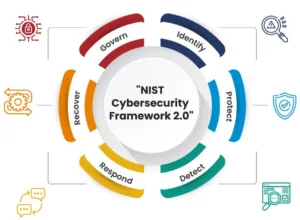
In this blog post, we will delve into the world of Shadow AI, exploring its definition and significance in today’s tech-driven world. We’ll examine the security risks associated with Shadow AI, from data privacy concerns to ethical considerations and compliance challenges.
Table of Contents
1. Introduction
In today’s rapidly evolving technological landscape, the emergence of Shadow AI has added a new layer of complexity to the intersection of artificial intelligence and cybersecurity. Shadow AI refers to the use of artificial intelligence and machine learning technologies within organizations without the explicit approval or oversight of IT and security teams. This clandestine deployment of AI solutions can have far-reaching security implications that organizations must address proactively.
Shadow AI, in essence, represents the unauthorized and often unmonitored utilization of AI-driven tools, algorithms, and applications by employees or departments within an organization. These solutions can range from AI-powered chatbots and data analytics tools to more sophisticated machine learning models. The significance of Shadow AI lies in its potential to introduce security vulnerabilities, ethical dilemmas, and compliance issues, making it a critical concern for organizations of all sizes and industries.
As AI technology becomes more integral to modern business operations, its relationship with cybersecurity becomes increasingly intertwined. AI not only enhances cybersecurity measures but can also be weaponized by malicious actors for cyberattacks. This delicate balance between AI’s defensive and offensive capabilities adds an extra layer of complexity to an organization’s security landscape.
2. The Emergence of Shadow AI
Artificial Intelligence (AI) has witnessed a remarkable journey, evolving from a concept to a disruptive force across multiple sectors. The historical context of AI’s development provides insight into its pervasive influence in today’s digital landscape. Initially, AI was confined to academic research and military applications, with the first AI programs dating back to the 1950s. However, over the decades, advancements in computing power, data availability, and algorithmic sophistication propelled AI into mainstream industries.
The healthcare sector embraced AI for diagnostic assistance and drug discovery. Financial institutions utilized AI for fraud detection and algorithmic trading. Manufacturing adopted AI for automation and predictive maintenance. Marketing and advertising employed AI for personalized customer experiences. This widespread integration of AI into various sectors was a transformative shift that laid the groundwork for the emergence of Shadow AI.
3. Factors Leading to the Rise of Shadow AI
Several factors have contributed to the rise of Shadow AI within organizations:
A. User-Friendly AI Tools:
The availability of user-friendly AI tools and platforms has lowered the barrier for employees to experiment with AI solutions without IT or security oversight. Cloud-based services and open-source AI libraries have made it easier to deploy AI without specialized knowledge.
B. High Stakes and Competition:
In competitive industries, there’s often a drive to gain a technological edge. Departments or individuals may resort to Shadow AI to stay ahead, leading to unapproved AI implementations.
C. Flexibility and Agility:
Shadow AI can offer departments the flexibility and agility they desire. Rather than waiting for IT approvals, they can quickly implement AI solutions to address specific needs.
D. Lack of Awareness:
In some cases, employees may not be fully aware of the security implications of Shadow AI or may underestimate the potential risks involved.
4. Real-World Instances of Shadow AI Security Risks
The consequences of Shadow AI can be significant, as demonstrated by real-world instances:
1. Data Breaches:
Unauthorised AI implementations can lead to data breaches and unauthorized access to sensitive information. In 2020, a major financial institution suffered a breach due to an unapproved AI-based analytics tool, resulting 0in millions of compromised customer records.
2. Compliance Violations:
Organizations can inadvertently violate data protection and privacy regulations when Shadow AI solutions mishandle or mishandle data. Such violations can result in hefty fines and legal repercussions.
3. Ethical Dilemmas:
Shadow AI may inadvertently introduce biases or unfairness into decision-making processes, leading to ethical concerns. This was exemplified when a retail company faced public backlash for using Shadow AI to optimize its workforce, resulting in biased scheduling practices. These real-world examples underscore the importance of addressing Shadow AI security risks proactively. In the following sections, we’ll delve deeper into the specific security challenges associated with Shadow AI and explore strategies to mitigate these risks effectively.
5. Security Risks Associated with Shadow AI
Shadow AI poses a multitude of security risks that organizations must address diligently. These risks encompass data privacy, malicious use of AI, ethical dilemmas, and compliance challenges.
A. Data Privacy and Confidentiality:
1. Unauthorized Access to Sensitive Data
Shadow AI implementations may not have the same level of access controls and security measures as officially sanctioned AI projects. This lack of oversight can lead to unauthorized access to sensitive data, including customer information, intellectual property, and financial records. Inadvertent or deliberate data breaches can result from such unregulated access.
2. Data Leakage Risks
Shadow AI tools might not be equipped to handle data securely, increasing the risk of data leakage. This can occur when AI models or applications inadvertently expose confidential information to unauthorized individuals or external entities. Leaked data can be exploited for various malicious purposes, including cyberattacks and identity theft.
B. Malicious Use of AI
1. AI-Powered Cyberattacks and Threats
The same AI technologies used for legitimate purposes within organizations can be turned against them by malicious actors. Cybercriminals are increasingly leveraging AI to conduct sophisticated cyberattacks, such as AI-driven phishing scams, automated malware propagation, and AI-assisted social engineering attacks. Shadow AI can inadvertently become a tool for cyber adversaries.
2. Impersonation and Identity Theft
Shadow AI applications, when compromised, can enable cybercriminals to impersonate employees or authorized users. This can lead to identity theft and unauthorized access to systems, networks, and sensitive data. The ability to mimic legitimate user behavior using AI can make detection and mitigation challenging.
C. Ethical Concerns:
1. Bias and Fairness Issues in Shadow AI:
The development and deployment of AI models, even in shadow projects, can introduce biases based on the data used for training. Unregulated AI implementations may lack the necessary ethical considerations and fairness assessments, potentially leading to biased decision-making. This can harm individuals or groups by perpetuating discrimination and inequality.
2. Accountability and Transparency Challenges:
Shadow AI projects often lack transparency in their decision-making processes. When an issue arises, it can be challenging to determine who is accountable for the AI’s behavior, making it difficult to rectify errors or mitigate ethical concerns. Transparency and accountability are essential for ethical AI deployment.
D. Compliance and Regulatory Risks:
1. Violations of Data Protection and Privacy Laws:
Organizations operating in regions with stringent data protection and privacy regulations, such as GDPR or CCPA, risk violating these laws when Shadow AI mishandles or processes personal data without proper consent or safeguards. Non-compliance can lead to substantial fines and reputational damage.
2. Legal Consequences and Penalties:
Shadow AI-related incidents can lead to legal repercussions, including lawsuits and regulatory investigations. Organizations may face penalties, fines, or legal action from affected parties if they fail to adhere to relevant laws and regulations. Understanding these security risks is crucial for organizations aiming to address Shadow AI effectively. In the next section, we’ll explore strategies and best practices for mitigating these risks and ensuring the responsible use of AI within an organization.
6. Mitigating Shadow AI Security Risks
Addressing Shadow AI security risks requires a proactive approach, involving a combination of education, monitoring, secure practices, ethics, and compliance measures.
A. Employee Education and Awareness: Employee education and awareness programs are essential to mitigate Shadow AI risks.
– Conduct regular training sessions to educate employees about the potential risks of Shadow AI and the importance of adhering to IT and security policies.
– Promote a culture of responsible AI usage, encouraging employees to report any Shadow AI initiatives they encounter.
– Foster open communication channels between IT/security teams and other departments to ensure concerns are addressed promptly.
B. Shadow AI Detection and Monitoring: Implementing Shadow AI detection and monitoring solutions can help organizations identify and manage unapproved AI implementations.
– Utilizing AI-powered tools and platforms designed to detect and monitor the usage of AI applications within the organization.
– Setting up alerts and notifications for unusual or unauthorized AI activities, ensuring prompt investigation and intervention.
– Establishing clear protocols for reporting and handling identified instances of Shadow AI.
C. Secure AI Development Practices: Encourage the adoption of secure AI development practices across the organization, whether for official or Shadow AI projects.
– Implement robust security controls, encryption, and access management for AI solutions.
– Conduct thorough security assessments and penetration testing on AI applications to identify vulnerabilities.
– Regularly update AI software and libraries to patch security flaws and stay protected against emerging threats.
D. Ethical Guidelines and Governance: Develop and enforce ethical guidelines and governance frameworks for AI usage.
– Establish principles for responsible AI development, ensuring fairness, transparency, and accountability in AI decision-making.
– Appoint AI ethics committees or officers to review AI projects for ethical compliance.
– Require AI project teams, even Shadow AI initiatives, to adhere to ethical standards and guidelines.
E. Compliance and Audit Measures: Implement compliance and audit measures to ensure that Shadow AI projects align with relevant laws and regulations.
– Regularly audit AI applications, including Shadow AI, to ensure compliance with data protection and privacy laws.
– Maintain records of AI usage and data handling practices for compliance reporting.
– Collaborate with legal experts to assess the legal implications of Shadow AI projects and address any non-compliance issues promptly. By adopting these mitigation strategies, organizations can strike a balance between fostering innovation and safeguarding against Shadow AI security risks. In the next section, we will examine real-world examples of organizations that faced Shadow AI incidents, drawing valuable lessons from their experiences.
7. Collaboration between IT and Data Science Teams
Effective collaboration between IT and data science teams is paramount to mitigate Shadow AI security risks. By working together, these teams can ensure that AI projects, whether official or shadow initiatives, are developed and deployed securely.
A. The Importance of Cross-Functional Cooperation
1. Comprehensive Security: IT teams bring expertise in cybersecurity, infrastructure management, and network security. Their involvement ensures that AI systems are integrated securely into the organization’s infrastructure, reducing vulnerabilities.
2. Data Governance: Data science teams specialize in data analysis and modeling. Collaborating with IT ensures that data used in AI projects is managed and stored in compliance with data protection regulations, reducing the risk of data breaches.
3. Ethical Oversight: Data science teams focus on model accuracy and performance, while IT teams can provide ethical oversight, ensuring fairness, transparency, and accountability in AI decision-making processes.
4. Rapid Response: In case of security incidents or breaches, the combined expertise of IT and data science teams allows for faster detection, response, and remediation.
B. How IT and Data Science Teams Can Work Together to Mitigate Risks
1. Clear Communication: Establish regular communication channels between IT and data science teams to facilitate the exchange of information regarding AI initiatives. Ensure both teams are aware of ongoing projects, objectives, and potential security concerns.
2. Collaborative Risk Assessment: Conduct risk assessments collaboratively, evaluating the security and ethical implications of AI projects. Identify potential risks specific to each project, and develop mitigation strategies accordingly.
3. Security by Design: Incorporate security measures into the design phase of AI projects. IT can provide guidance on secure coding practices, encryption, and access controls, while data science teams focus on model development.
4. Shared Responsibility: Define roles and responsibilities for each team in the AI development and deployment process. Ensure that IT and data science teams have a clear understanding of their respective roles in maintaining security and compliance.
5. Regular Audits and Testing: Collaborate on regular security audits and penetration testing to identify vulnerabilities and weaknesses in AI systems. Use the findings to improve security measures.
6. Ethics Committees: Establish cross-functional ethics committees that include members from both IT and data science teams. These committees can review AI projects for ethical compliance and make recommendations for improvements.
7. Training and Awareness: Provide training to both IT and data science teams on AI security best practices and ethical guidelines. Foster a culture of security and responsibility within the organization. By fostering collaboration between IT and data science teams, organizations can harness the power of AI while effectively managing and mitigating the security risks associated with Shadow AI. This collaborative approach ensures that AI projects align with organizational goals, comply with regulations, and operate securely in an increasingly complex digital landscape.
8. Conclusion
In this exploration of Shadow AI security risks, we’ve shed light on a burgeoning challenge that organizations across industries must confront. As the adoption of artificial intelligence continues to grow, so does the potential for Shadow AI to introduce vulnerabilities, ethical dilemmas, and compliance concerns.
Ultimately, the responsible and secure use of AI, whether officially sanctioned or shadow projects, is a shared responsibility. Organizations, IT, data science teams, and individuals all play a part in ensuring that AI is harnessed for its transformative potential while safeguarding against its inherent risks.
In conclusion, the journey to secure AI and mitigate Shadow AI risks is ongoing. By staying informed, collaborating, and embracing a culture of responsible AI usage, organizations can navigate this evolving landscape with confidence, ensuring that AI continues to drive innovation without compromising security or ethics.
9. Frequently Asked Questions (FAQ)
Q1. What is Shadow AI, and why is it a security concern?
A: Shadow AI refers to the unauthorized use of artificial intelligence (AI) and machine learning technologies within organizations, without the approval or oversight of IT and security teams. It is a security concern because it can introduce vulnerabilities, ethical dilemmas, and compliance issues, potentially leading to data breaches, legal consequences, and more.
Q2. How can organizations detect Shadow AI projects within their infrastructure?
A: Detecting Shadow AI requires the use of specialized tools and techniques. AI-powered solutions for AI usage monitoring and anomaly detection can help organizations identify unapproved AI implementations. Collaboration between IT and data science teams is crucial in this process.
Q3. What are some real-world examples of Shadow AI incidents?
A: Real-world instances include data breaches due to unauthorized AI applications, compliance violations, and ethical concerns. For example, a financial institution suffered a data breach when an unapproved AI analytics tool was used, compromising customer records.
Q4. How can organizations mitigate Shadow AI security risks effectively?
A: Effective mitigation strategies include employee education and awareness programs, robust detection and monitoring of AI usage, secure AI development practices, ethical guidelines, and governance frameworks, as well as compliance and audit measures.
Q5. What is the role of collaboration between IT and data science teams in addressing Shadow AI risks?
A: Collaboration is essential to align IT’s expertise in cybersecurity and infrastructure management with data science’s knowledge of AI models and data analysis. Together, these teams can ensure secure AI deployment, ethical considerations, and compliance with data protection laws.
Q6. What are the legal consequences of Shadow AI security incidents?
A: Legal consequences can include fines, lawsuits, and regulatory investigations. Organizations may face penalties for non-compliance with data protection and privacy laws, especially if sensitive data is mishandled or exposed.
Q7. How can organizations balance innovation with security when it comes to AI projects?
A: Balancing innovation with security requires a proactive approach. Organizations should establish clear policies, educate employees, and encourage responsible AI development. Collaboration between IT and data science teams helps strike the right balance.
Q8. Is Shadow AI always intentional, or can it happen unintentionally within organizations?
A: Shadow AI can occur both intentionally and unintentionally. Sometimes, employees may not be fully aware of the security risks associated with unapproved AI usage. Regardless of intent, organizations must address Shadow AI risks comprehensively.
Q9. Are there any regulatory frameworks or guidelines for managing Shadow AI risks?
A: While there may not be specific regulations focused solely on Shadow AI, existing data protection and privacy laws often apply. Organizations should also consider industry-specific guidelines and ethical frameworks for AI usage.
Q10. What is the future of Shadow AI, and how can organizations stay prepared? A: The future of Shadow AI will likely see continued growth and evolving security challenges. Organizations should stay informed, adapt security measures, and promote a culture of responsible AI usage to navigate this evolving landscape effectively.
Read more on https://cybertechworld.co.in for insightful cybersecurity related content.



















